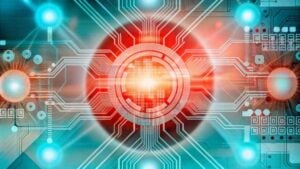Integrating PCBs into Energy Recovery Systems for Sustainable Manufacturing
Governments have policies in place so that companies will operate under a certain level of environmental accountability. Thankfully, some brands have the initiative to go beyond what is asked by the law. Leading companies, particularly the eco-conscious ones, integrate PCB into their energy recovery systems for a highly efficient and less wasteful degree.
The use of printed circuit boards in this sustainable movement begins with collecting wasted energy and putting it back to work. Heat, pressure, or motion that usually gets trashed in traditional operations are recycled to cut energy costs. Apart from saving thousands of dollars in medium-to-large-scale operations, it’s also a great practice that reduces the overall environmental footprint.
However, making energy recovery seamless is only possible with smart control systems. This is where companies tap PCB-powered solutions.
The Need For Smarter Energy Recovery Systems in Manufacturing
Massive amounts of energy are spent every day in industrial plants. Sadly, lots of that energy is lost and doesn’t get reused.
Factories and industrial plants use massive amounts of energy every day. A lot of that energy gets lost as heat or mechanical motion that doesn’t get reused. Instead of letting these resources go to waste, recovery systems powered by high-precision printed circuit boards can convert them back into usable power.
There are several types of energy recovery systems in manufacturing, including:
- Heat Recovery captures waste heat from machines to generate electricity resources.
- Regenerative Braking systems are used in industrial conveyor belts, cranes, and automated guided vehicles (AGVs) to convert braking energy into usable power.
- Pressure Recovery reclaims energy from high-pressure gas or fluid systems. This is the usual system used in steam and hydraulic circuits.
How PCBs Help Build Energy Recovery Systems
PCBs are the backbone of modern control and monitoring systems. They enable real-time data processing, automation, and seamless communication between different components of an energy recovery system. Without printed circuit boards, managing energy conversion and distribution would be far less efficient.
PCBs in energy recovery systems handle key functions such as:
- Sensor Integration: Collecting data from temperature, pressure, and motion sensors to track energy flow.
- Power Conversion: Managing voltage regulation and power distribution for recovered energy.
- Automation & Control: Controlling switches, relays, and actuators to optimize energy reuse.
- Data Logging & Connectivity: Storing energy usage data and connecting to industrial networks for better monitoring.
By integrating PCBs, energy recovery systems can run smoothly with minimal human intervention.
Applications of PCB-Integrated Energy Recovery in Manufacturing
Many industries are already using energy recovery to improve efficiency. Here are some real-world applications:
1. Waste Heat Recovery in Metal Processing
Manufacturing plants that deal with metal casting or forging are infamous heat generators. Instead of letting heat dissipate, thermoelectric generators can turn them into usable electricity. Multilayer PCBs have clever heat flow systems that allow the proper distribution of recovered energy.
2. Regenerative Braking in Factory Automation
Automated conveyor belts, robotic arms, and AGVs constantly start and stop. Regenerative braking systems can recover energy while they operate. PCBs control the charging-discharging process, keeping energy flow efficient.
3. Pressure Energy Recovery in Steam Systems
Many factories use steam for chemical reactions. High-pressure steam that would normally be vented out can be redirected into turbines to generate electricity.
4. Hydraulic Energy Recovery in Industrial Equipment
Heavy hydraulic machinery wastes energy when releasing pressurized fluid. Energy recovery systems capture this excess pressure and convert it back into mechanical power. PCBs help regulate the valves and pumps to maximize efficiency.
Challenges in Integrating PCBs into Energy Recovery Systems
Even though energy recovery is a great idea, implementing it isn’t always easy. Here are some challenges that come with PCB integration:
- Harsh Operating Conditions: Many industrial environments have extreme temperatures, dust, and vibrations that can damage PCBs. Using protective materials helps mitigate this.
- Compatibility Issues: Not all legacy machines were built with energy recovery in mind. Custom circuit board designs can ensure smooth integration with older systems.
- Complex Data Processing: Energy recovery requires real-time adjustments. PCBs must be programmed to process sensor data quickly and make split-second control decisions.
Despite these challenges, advances in PCB design and embedded systems are making energy recovery systems more reliable and adaptable.
The Future of PCB-Integrated Energy Recovery
With industries pushing toward greener practices, energy recovery is becoming a bigger focus. PCBs will continue to improve, making these systems smarter and more efficient. Some future trends to watch include:
- AI-Assisted Energy Optimization: PCBs with AI capabilities could predict energy waste patterns and adjust recovery systems in real-time.
- Wireless Energy Monitoring: Remote PCB-based sensors could allow plant managers to monitor energy flow without being on-site.
- Better Energy Storage Integration: PCBs will help manage how recovered energy is stored, whether in batteries or super capacitors.
To stay updated with the latest developments in STEM research, visit ENTECH Online. Basically, this is our digital magazine for science, technology, engineering, and mathematics. Furthermore, at ENTECH Online, you’ll find a wealth of information.





